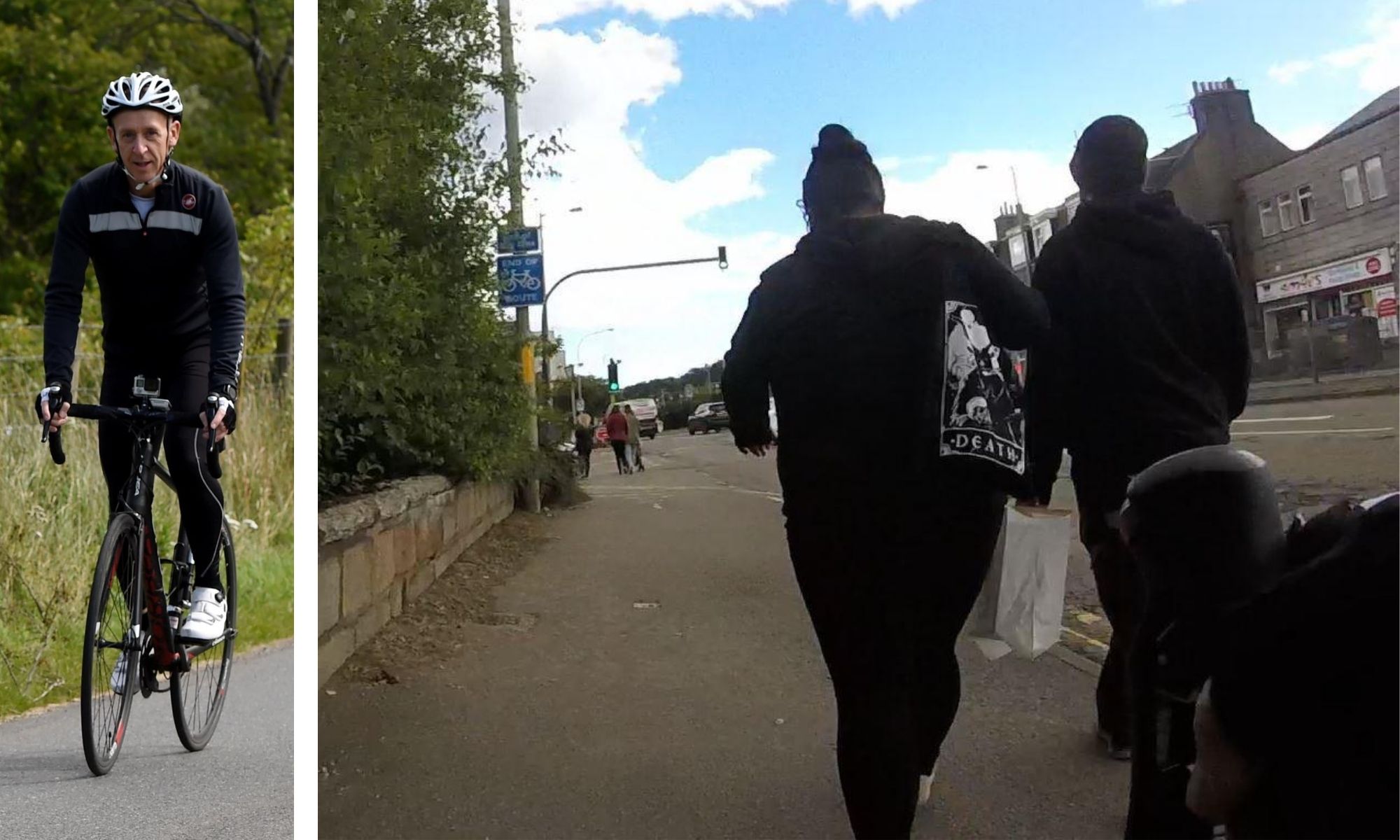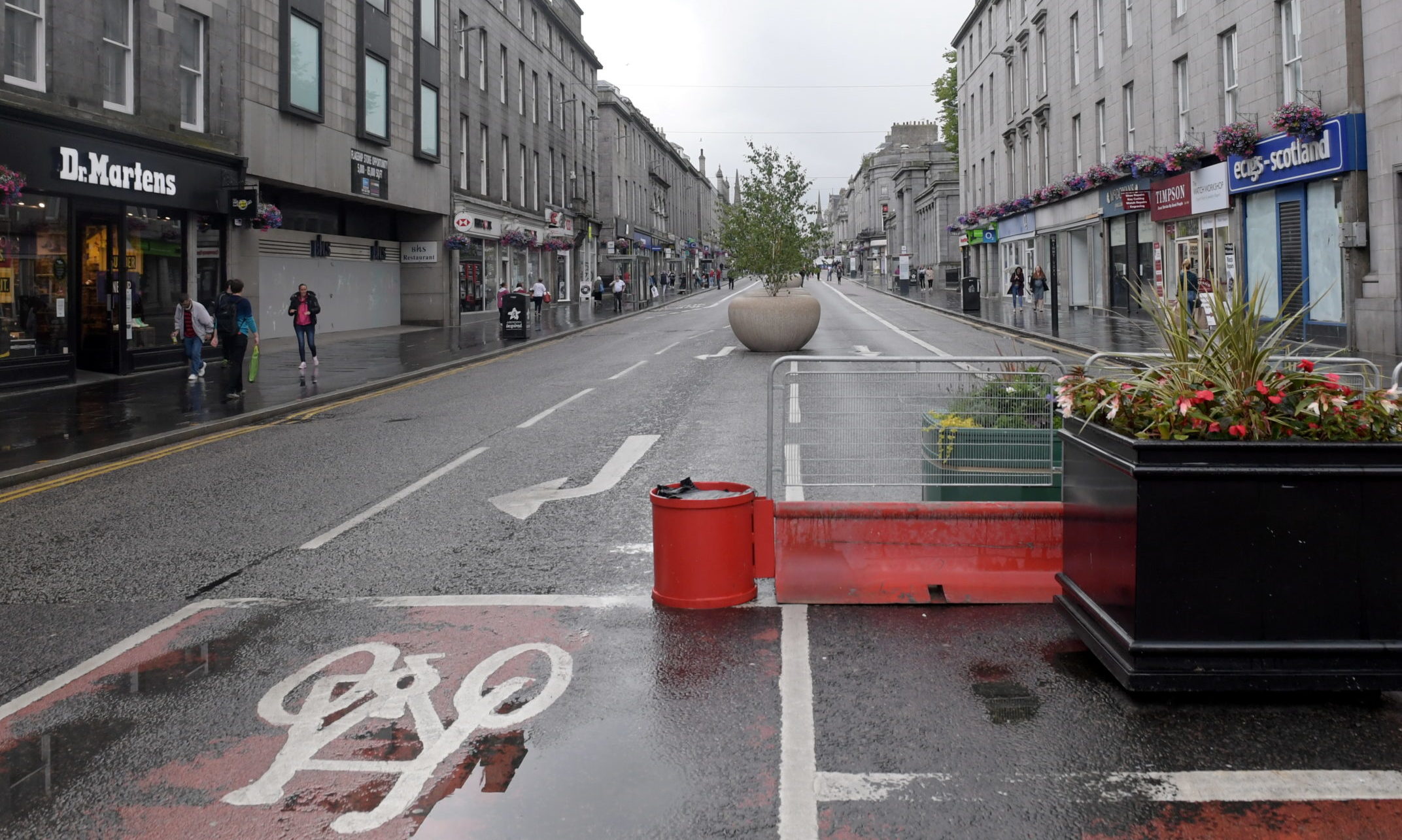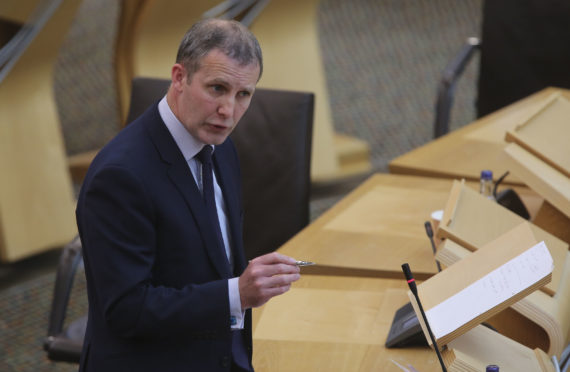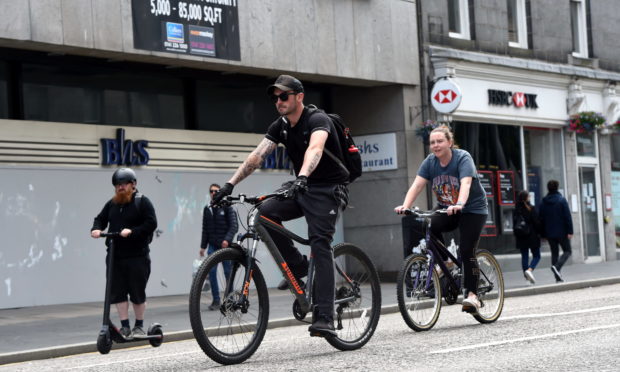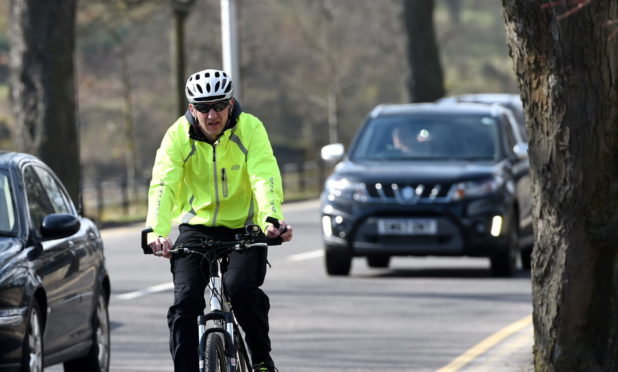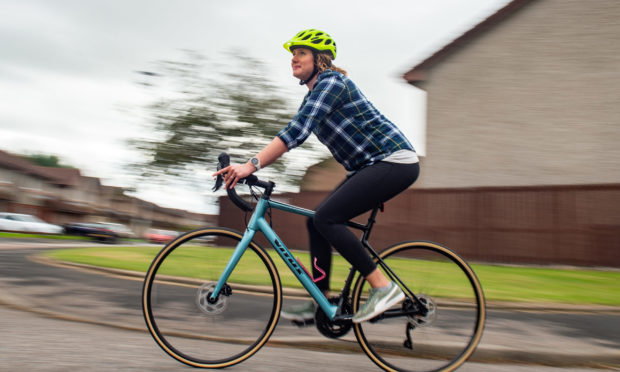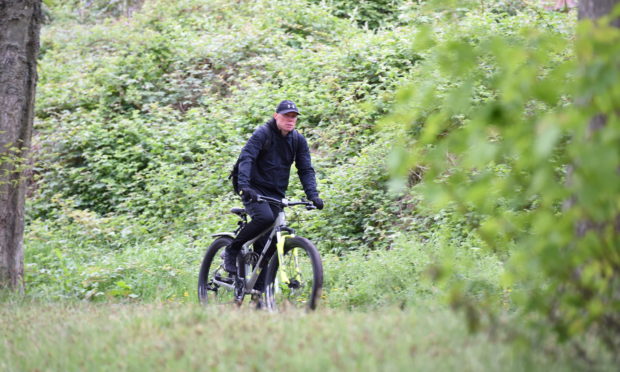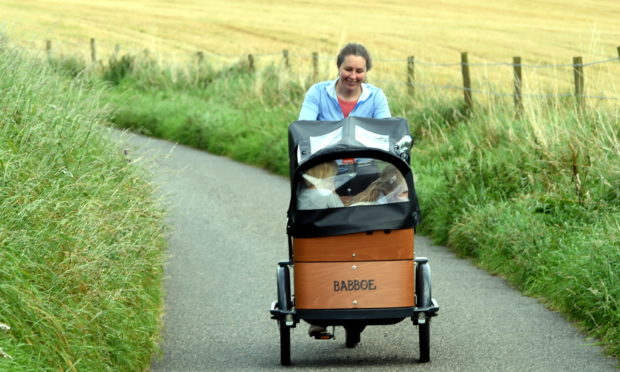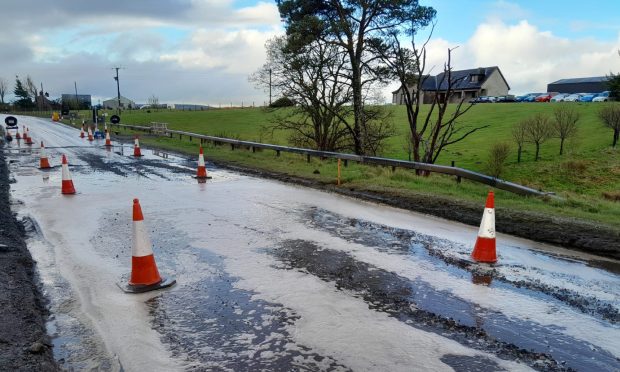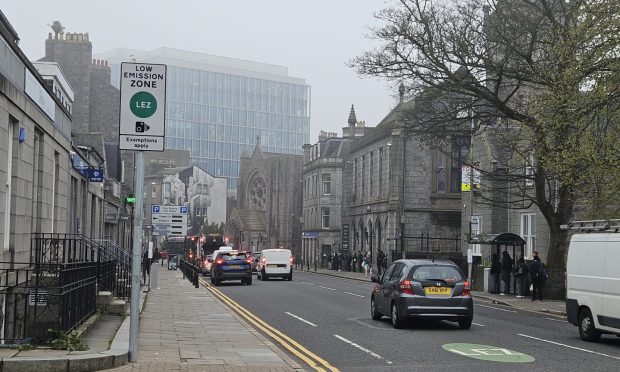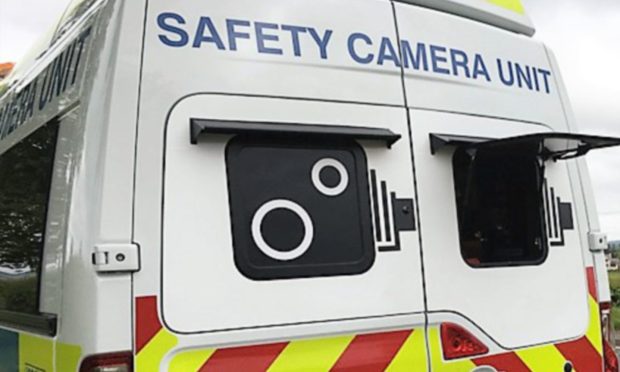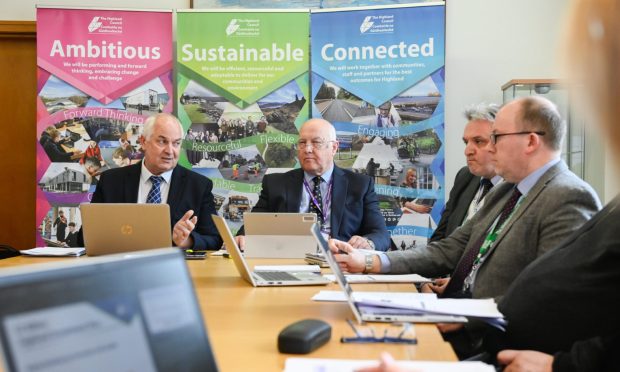In the second part of our series examining how transport could change in Scotland post-coronavirus, we speak to local cyclists about what has changed in Aberdeen since lockdown began – and what needs to change to keep people cycling.
How have the North East’s roads changed from a cyclist’s perspective in lockdown? Blackburn man Neil Mackland is probably best qualified to answer that – he’s been out on his bike every single day since it began.
Prior to lockdown, the cyclist of two decades would drive to the Craibstone Park and Ride close to Aberdeen Airport, bike in tow, and cycle into the city centre for work.
Now, he typically cycles upwards of 20 miles a day to keep fit and get some air in between spells of working from his dining table.
“I’ve been able to relax on the bike a lot more than before,” he says.
“You’re not spending your time concerned that you’re holding people up, because I don’t like doing that, or that you have to check before cutting across roads that you’d never normally think of using.
“There are still some places – the Haudigan Roundabout – which are tricky, because the path you’re meant to use is full of folks pushing buggies.”
Neil’s rides in lockdown have taken him across the North East, along his usual commuting routes at the Esplanade and Union Street, and he thinks it’s never been better – though the measures put in place for social distancing have led to confusion.
“There is unfamiliarity with how the new layouts work, for sure. I generally didn’t know what I was supposed to be doing,” he says.
“The first time I was on Union Street I was confused about where I was supposed to be – I realise now I was supposed to be in the same lane as the bus.
“It must be an absolute nightmare for the bus drivers at the moment.”
The biggest problems for local cyclists remain the same as ever: no matter how many new avenues are opened to cyclists, poorly maintained road surfaces will only serve to put them off.
Neil added: “I don’t often cycle into the city centre using what is there in terms of designated routes – I make my own way with what I see as my safest route.
“What I’ve noticed a lot as well is the actual condition of cycle lanes. They are horrendous, and they have been for a while. I can see why cyclists will cycle in the road rather than in the lanes – if you’re on a road bike bumps can knock the hell out of your bike.
“Taxi drivers always ask me why I’m not in the lanes and I tell them it’s because they are bloody awful.
“And on Auchmill Road, the paths travel between bus shelters – every single time, someone takes a step out of a bus shelter when I ride by.”
Pandemic Pedal Power: Tell us about cycling where you live in our new survey
The veteran believes cyclists and drivers can co-exist on the roads, with a little consideration for one another.
“I’m amused how often I put a thumb up to say thanks that I’ll get the hazard lights in return in a friendly way.
“I’ve had my fair share of idiotic drivers who just want to have a go at you, or even itching for a fight. I’ve had that two or three times.”
Caroline Hood, a cycling policy expert at Robert Gordon University, is convinced Aberdeen is reluctant to embrace cycling because it has been used to cars for so long.
Ms Hood, who is also vice-chair of the Grampian Cycle Partnership, said: “We don’t talk about people who drive cars as ‘drivers’ so why do we do that for cyclists?
“We always get the same arguments: ‘I’m insured’, ‘I pay vehicle excise duty and I’m entitled to this road space’, but some drivers are just not comfortable with the idea that cyclists can use the same space.”
Ms Hood believes that cities like Aberdeen, and even town centres, need to put moving people at the centre of any future plans, rather than cars, if they want to revitalise local high streets.
“Our town centres are currently about moving metal boxes around – they need to be better for individuals,” she continues. “Active travel is a huge leveller.”
In her view, a serious commitment to active travel comes in the form of investment both now and post-Covid as car levels return to pre-pandemic levels.
The hope is that, by making driving into towns harder and walking and cycling easier, people will come to their own natural conclusions about how best to get around – in other words, by bike.
Research even suggests that those who use active travel methods like walking and cycling spend more on our high streets. Living Streets’ Pedestrian Pound report found that better access to public spaces for pedestrians improves footfall and spending.
Ms Hood continued: “Some people are altruistic and will be motivated to cycle by the environmental arguments but with others we’ll need to show them the practical reasons, like the fact it can be faster to cycle than drive short distances.
“We know for some people, like those with mobility issues, the car is the only option, but we need to normalise cycling in the way it is normalised in places like Copenhagen, where it’s seen as a mode of transport rather than a hobby.”
A survey of Copenhagen’s citizens on why they cycle found that more than half named the sheer speed and convenience of cycling as the main reason, with fewer people citing the health benefits. There’s no such thing as a “capital-C cyclist” in Denmark.
“We can’t get away from this now,” Ms Hood adds.
“We need to be serious about investing in active travel infrastructure, and it needs to be done hand-in-hand with reinforcement of the message that cycling is something you should try.
“There’s a lot to be done around the perception of safety, and good quality infrastructure increases that feeling of safety among people.
“But if we want people want to walk and cycle into the city centre that means appropriate cycle parking, signage, and bravery by politicians. At the end of the day, more space for people is a good thing. We can already see that happening.”
For cyclists like Neil Mackland who are used to weaving in and out of traffic, building more cycle lanes is not an incentive – seasoned pedal-pushers have spent years acclimatising to the roads.
But he does believe that segregated infrastructure is the way forward to encourage those of a more nervous disposition into the saddle, and to keep them there.
“I’ve loved seeing families, older folk, and people that you can tell haven’t been out on a bike for a few years out and about,” he says.
“There isn’t a bike to be found in Halfords. It’s brilliant.”
Share your views on cycling where you live
The Press and Journal is looking for cyclists from across the north and north-east Scotland to complete our Pandemic Pedal Power survey, sharing views on how your cycling habits have changed – or even formed – during lockdown.
The survey is open to both experienced and novice cyclists, and completed surveys will be entered into a draw to win a £50 Halfords voucher.
